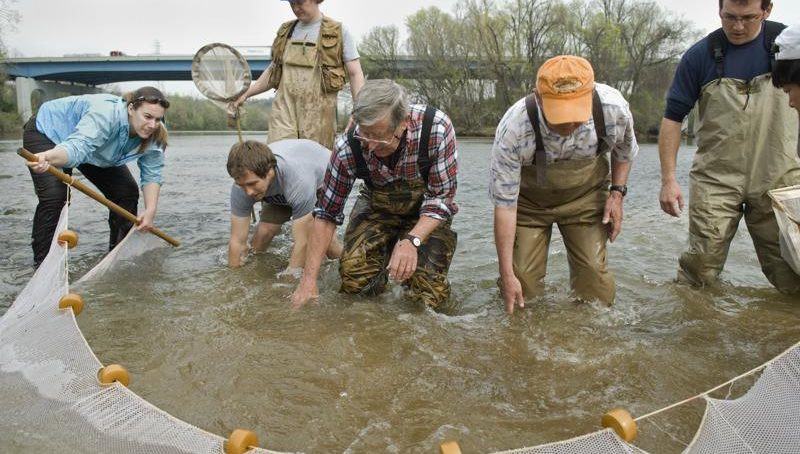
The snail darter, a tiny South-eastern fish that derailed a federal dam during an epic battle over Endangered Species Act protection in the 1970s, is no longer considered imperilled, officials have announced.
The fish held up construction of the Tellico Dam in Tennessee for more than two years as biologists and others fought to protect its only known habitat, the free-flowing Little Tennessee River. The battle, which went to the US Supreme Court and beyond, is still sometimes cited as an example of environmentalist overreach, although the reality is much more complicated.
The dam eventually was built, with snail darters collected and transplanted into other rivers. They were also later discovered in several additional streams.
Snail darters went from being considered an endangered species in 1975 to a threatened species in 1984 as they continued to recover. Three years ago, the Centre for Biological Diversity, Jim Williams and Zygmunt Plater petitioned to remove the fish from federal protection altogether. Williams is the biologist who listed the snail darter as endangered. Plater is the attorney who sued to protect it.
The US Department of the Interior on Tuesday announced the snail darter’s official removal from the federal list of threatened and endangered wildlife. It is the fifth fish species, and the first in the eastern United States, to be delisted because the population has recovered, according to the agency.
Interior Secretary Deb Haaland in a news release called the fish’s recovery “a remarkable conservation milestone that tells a story about how controversy and polarisation can evolve into cooperation and a big conservation success.”
Snail darters are members of the perch family. They have four dark brown bands on a lighter brown body, grow as long as 3.5 inches (nine centimetres) and eat mostly freshwater snails. The protection of the snail darter was the first big test of the Endangered Species Act because protecting it meant blocking construction of a Tennessee Valley Authority dam. Although the conflict was portrayed as environmental extremists versus economic realists, in reality, the Tellico Dam was quite small and unneeded to generate electricity.
After Plater took the case to the US Supreme Court and won, Congress created a high-level committee to consider possible exceptions to the Endangered Species Act. But that committee also ruled in favour of the fish, finding that the dam project did not make economic sense. Congress eventually exempted the Tellico Dam from the Endangered Species Act through a rider to an appropriations bill.
Plater said in an interview that their petition for delisting was not without reservations. Although the snail darter has recovered, several of its populations still depend on human intervention. The Tennessee Valley Authority adds liquid oxygen to the water at times and pulses dams to get silt off the gravel where the snail darters spawn.
Those actions help produce conditions closer to that of a free-flowing river and are good for other fish and aquatic animals. So, in that way, the Endangered Species Act still helped the snail darter. Its recovery was also helped by the Clean Water Act, which has reduced water pollution, Williams said.
“The point is that the Endangered Species Act and the Clean Water Act work,” Williams said. “It’s taken about 50 years to start seeing some results, but it took us 100 years to destroy things. Give it time.”
- An AP report











